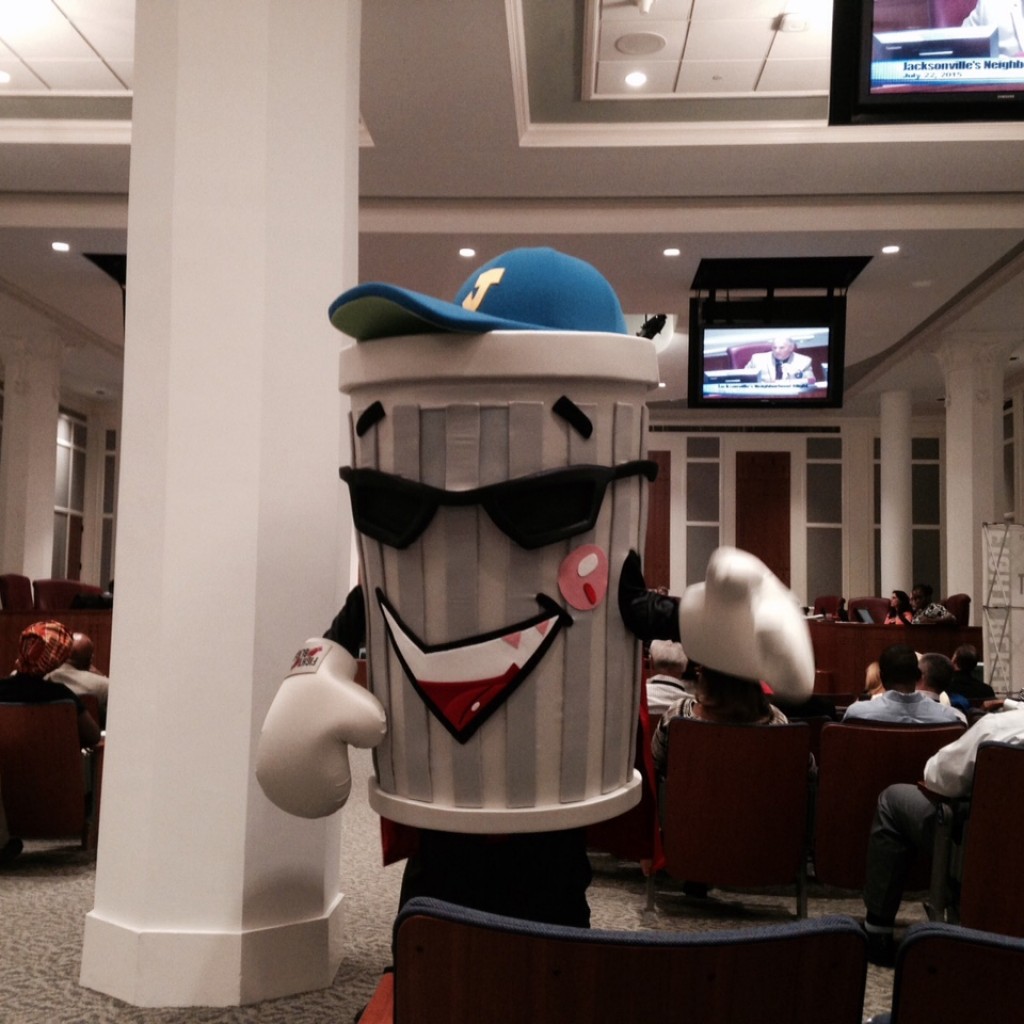
Optimism is the watchword at the St. James Building these days.
You hear it from people on the outside, such as Jax Chamber Chairman Daniel Davis, who sent Curry a note this week that said it all: “Really glad that you are my mayor.”
Spoiler alert: Don’t look for any drama when the Chamber gets around to its endorsement in 2019’s mayoral race.
 And you hear it from people on the inside, such as those in various offices on the fourth floor. None are more optimistic than Denise Lee, director of Blight Initiatives for the Curry administration, who prior to the Wednesday morning Blight Committee meeting said she’s “optimistic” about the mayor’s approach to mitigating and eliminating blight.
And you hear it from people on the inside, such as those in various offices on the fourth floor. None are more optimistic than Denise Lee, director of Blight Initiatives for the Curry administration, who prior to the Wednesday morning Blight Committee meeting said she’s “optimistic” about the mayor’s approach to mitigating and eliminating blight.
Though Lee is now part of the executive, not the legislative, branch, she’s the administration’s liaison to this committee, and has more than just a little bit of insight into how to deal with blight issues.
Before the meeting, she explained why blight initiatives are so necessary. Often, she said, an event like the opening of a shopping mall can decimate neighborhood retail, then set a chain of events into motion that leads to the erosion of neighborhood retail. That in turn changes the neighborhood’s residents from owners to renters, and then the inevitable: As more people live in the neighborhood than there are jobs for them, it accelerates the decline in living standards.
In her office, Lee read aloud a definition of blight from the Urban Dictionary (which she also read during the meeting) that some will find controversial, and others will find less so:
The feeling, when walking through a part of town, that this neighborhood has seen better days. The decline of a part of the city from thriving neighborhood to encroaching ghettodom. … The first signs of blight are poorly kept properties, damaged building facades and an increasing number of “for sale” signs.
Blight can worsen or recover, but if aided by a poor economy, it can be the precursor to the descent of the neighborhood into ghetto status. Jobs stay scarce, the upper middle classes leave because the area is no longer “desirable,” the lower middle classes leave to find jobs in other towns. As property values plunge, the neighborhood becomes populated by the very poor, who can’t afford to live anywhere else. Since ethnic and class lines often run parallel, the neighborhood often changes color. As buildings fall into disrepair, for sale signs give way to boarded-up windows. In its final state, the neighborhood is a slum, a ghetto, plagued with crime, disease and, above all, crushing, inescapable poverty.
As the meeting started, Council President Greg Anderson gave the “charge” for the committee, saying, “Personally, I believe a strong neighborhood makes a strong Jacksonville,” a comment in line with things he has said regarding the importance of the special committee in the past.
Blight remediation, of course, is about the small fixes; in baseball parlance, hitting for average rather than power. Street lights being too dim, for example, was cited in Wednesday’s meeting by Councilman Reggie Brown as a “major concern” that “we’ve been talking about for some time” regarding providing a higher quality of service.
As Public Works Director Jim Robinson said, work is in progress.
Noise and late garbage pickups, likewise, became a point of discussion, as Councilmen John Crescimbeni and Bill Gulliford discussed the importance of extending the 630-CITY service hours to evenings and weekends so that Jacksonville citizens can voice their concerns.
Forty percent of the 30,000 monthly calls to 630-CITY are, according to Paul Martinez of Intra-Government Services, related to blight.
And blight takes many forms: Overgrown right of ways, discarded tires and snipe signs, and other litter.
The discussion of tires was, not surprisingly given the presence of committee member Tommy Hazouri, animated. He talked about how, back when he was mayor in the late 1980s, the city would actually be paid to take old tires.
An extended discussion of tire buyback followed.
Undersheriff Pat Ivey, who has been the liaison from the Sheriff’s Office to the Blight Committee since 2013, discussed the ramp up of the Jacksonville Sheriff’s Office involvement since them. From initially addressing a situation at the 13th and Moncrief intersection to larger issues, such as loitering and using vacant properties for selling drugs and other illegal transactions, the JSO’s priorities have been aligned with those of the committee. He also introduced the new liaison to Blight, Chief Derrick Lewis.
Among other issues discussed was the deployment of surveillance cameras. They are targeted by JSO to remedy illegal dumping and criminal malingering. There aren’t enough of them, Ivey said, though what they have has been “very helpful.”
Code violations, nuisance abatements, board-ups, and heavy debris removals. Maintaining the integrity of closed schools, that have been boarded up and readied for sale.
Garrett Dennis may be the chairman of this committee, but Lee is still the heart and soul of it. As the administration liaison to the committee, she will ensure that her priorities are reflected in what the committee does.
However, that will happen under a different name, if Councilman Dennis has his way.
At the end of the meeting, Dennis proposed changing the name of the committee to the NICE Community: Neighborhood Improvement and Community Enhancement. Citing examples of Biblical name changes, Dennis framed a committee name change as a way to establish a “new identity,” a “new destiny.”
Council President Anderson is on board, and there seemed to be no objection from the committee. A show of hands confirmed that.



